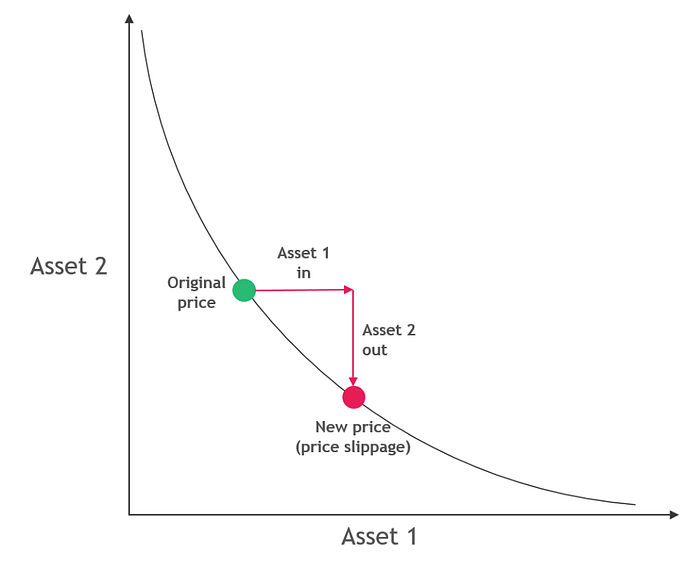Part One — AMM: Impermanent loss shouldn’t be the deal-breaker when providing liquidity

In light on the recent DeFi 2.0 narrative, I figured I would like to contribute by writing in a two-part series. The first part of this article is to bring the reader back to the history of LP-ing and fast forward to what I think would be the future of LP-ing
Disclaimer! If you do not know anything about how Decentralised Exchanges (DEX) or liquidity providing work, I suggest you read an article or watch a video about that first, then come back to this article
Impermanent loss (IL) has always been the no.1 concern on every investors’ mind before providing LP.
This results in inaction, and procrastination. That in itself is a permanent loss of additional yield not accrued from protocol and trading fees when providing liquidity
One of the best ways to overcome impermanent loss is to look beyond it.
Although liquidity providers can experience impermanent loss, the yield on their tokens must also be taken into account. If your yield generates higher returns than the amount you lose from impermanent loss then you can receive more profit than simply holding the tokens. By receiving yield on your tokens in a liquidity pool, you are also turning them into a productive asset.
Why HODL Ethereum(ETH) when you can stake and yield an additional 32% APY from it. Sounds crazy? Alpha at the end
A Paradigm shift from an Order-book model (CLOB) to Automated Market Maker (AMM) model
To study and tackle the topic of impermanent loss, we have to first study why it even exists in the first place. Unlike an order book that specifies prices at which buyers and sellers wish to trade, an AMM exchange aggregates liquidity for both sides of a trading pair into a pool. Instead of trading between buyers and sellers, users trade against a pool of tokens — a liquidity pool
The primary advantage of AMM is that there will always be liquidity for otherwise illiquid markets, and AMMs enables traders to always get a price quote on their asset, regardless of the number of active orders submitted to the exchange. However, it brought a set of new problems, such as high slippage and risks for liquidity providers.

The way how AMM pool works is it determines a single market price according to a deterministic algorithm. One such rule is the constant product formula x * y = k
Auto-rebalancing happens when there’s an imbalance in price between the token pair, resulting in impermanent loss
A great example is If the price of token x (EX: ETH) goes up and y (EX: USDC) remains stable, your portfolio (LP) is rebalanced by selling ETH to USDC so as to achieve parity. USDC value = ETH value. As a result, you will have less ETH and more USDC in LP but the value of both assets will be the same.
The result of auto-rebalancing of the token pair is what causes impermanent loss. In the scenario above, investors are better off HODL-ing than LP-ing. In a bearish scenario, where a token plummeted much more than the other token pair, you would have wished that you had it automatically re-balanced in a pool to mitigate losses. In other words, IMO impermanent loss can be seen as a double-edged sword. Either way, the benefits you inherit as an LP provider is allowing a “portfolio manager” to auto-balance your portfolio + earn trading fees w/o having to go through the hassle of doing it yourself
If the impermanent loss is a result of the constant rebalancing of the token pair in the pool, why do we see investors/traders getting their hands burned when providing LP
The REAL RISK comes from providing LP with underlying assets investors are not familiar with
A classic example of how investors/traders lose a lot of money is when are seduced into providing LP to pools with high APY(%), utilising tokens they aren’t familiar with or tokens they have little to no conviction of.
When the token pair starts depreciating a lot in value, many investors and traders mistakenly attribute their losses of LP value as impermanent loss. The real loss is not generally from IL but from the underlying coins dropping in price relative to stable assets.
It only BECOMES PERMANENT LOSS if investor PULLS OUT OF their liquidity pool
This mostly happens to investors/traders who have little to no conviction in the tokens they LP with.
If you LP with 2 underlying assets you are extremely bullish on in the long term, even if you are impacted by IL in the short term, as long as you are still in the liquidity pool, the impermanent loss will not be permanent. The loss is only impermanent due to the fact that price constantly moves and as long as you are still in the liquidity pool, the price could come closer or further away from your entry price. So strategy wise this really means that liquidity providing is more of a long-term game rather than a short-term game.
To wrap this, key points I would like to drive home
- Never be tempted to provide liquidity with underlying assets you are not familiar with even with high rewarding APY (%) — Not worth adding points to your degen yield farm creds
- The best practice I’ve observed in the space to help mitigate impermanent loss is to consider dollar-cost averaging (DCA) into farms or enter into a farm when the market is trading sideways
- Although liquidity providers can experience impermanent loss, the yield on their tokens must also be taken into account. If your yield generates higher returns than the amount you lose from impermanent loss then you can receive more profit than simply holding the tokens. Consider the risk-reward ratio before making depositing into any farms
- Consider putting your funds with professional market makers who have the expertise to actively manage your LP position for you, reducing your risk of IL and maximising returns of your underlying assets for you VS passive LP-ing.
I hope you enjoy the article as much as I do writing them — Feel free to follow me on Twitter
